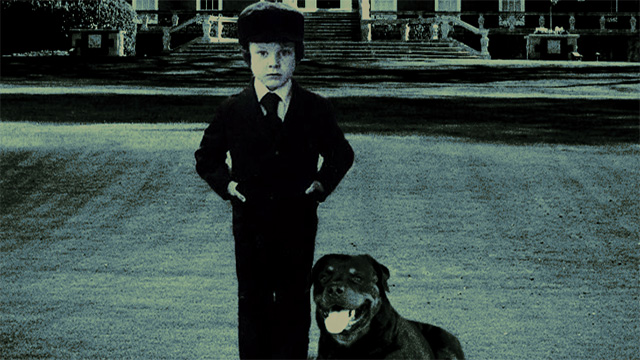Over Halloween, the ComingSoon.net staff decided it was the perfect time to dive into a few horror and cult classics that have been terrifying fans for decades that some of us have been missing out on all this time. In our CS never-seen-it-before reviews, we tackle the devil, zombies, witches, demons, and chainsaw-wielding serial killers and let you know which ones are worth watching or revisiting. You can check out our reviews below!
RELATED: ComingSoon’s 2020 Halloween Gift Guide Video!
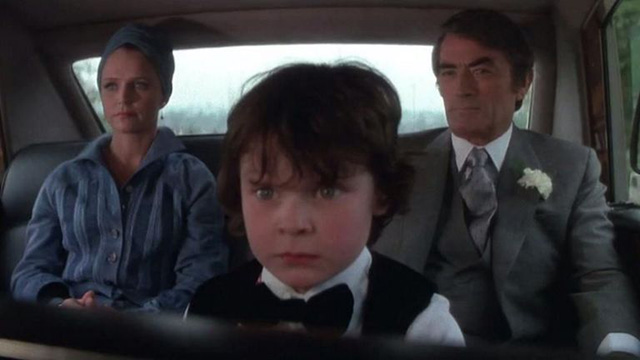
MAX EVRY: The Omen (1976)
Click here to purchase The Omen!
Religious horror has always been an issue with me. I was raised secular, and have no real spiritual beliefs to speak of, so concepts like The Devil or The Antichrist have zero effect on me in terms of scares. Not that I haven’t enjoyed a few in my time (I’m looking at you, Conjuring movies) but films like The Exorcist and Rosemary’s Baby have not had close to the impact on me as they have on the culture at large.
Enter the Omen franchise, which had been on my radar for years due to its classic status and my appreciation for director Richard Donner, but I had never had the inclination to actually view it. Scream Factory had sent me a boxed set of all five Omen films not long ago, and it had been my wish to dig into it someday. With no time like the present, I finally sat down and watched the original Omen this Halloween and was surprised how much I enjoyed it.
Of course, being a horror and pop culture fan I wasn’t wholly unfamiliar with the film. Some of its classic moments like the nanny suicide, Lee Remick’s fall from the upstairs railing, or David Warner’s Final Destination-esque beheading had been featured in clip shows or parodied in other films. Edgar Wright has made a virtual career of paying homage to this film, right down to casting Billie Whitelaw in Hot Fuzz.
That said, I found the story of a US Ambassador whose son turns out to be one wicked little sunuvabitch to be well-structured and expertly directed by Donner. Perhaps the biggest surprise is how much it had the feel of an Italian Giallo film, with much of the complex structure and elaborate kills not too dissimilar to the movies Dario Argento was making at the time. Maybe that is partly due to so much of the runtime taking place in and around Rome, but I think that feeling is definitely there.
The cast is great too. Gregory Peck is onboard 100% for the supernatural silliness, grounding the material. Warner is also groovy as the somewhat sleazy paparazzi who gets roped into the intrigue, and former Doctor Who Patrick Troughton is fabulously unhinged. All the set pieces like the baboon attack at the zoo or the insane death of the priest are so well executed that it really doesn’t matter if you buy into all the biblical stuff. Donner is and remains a wildly underrated journeyman in the best sense, and one of our best living directors.
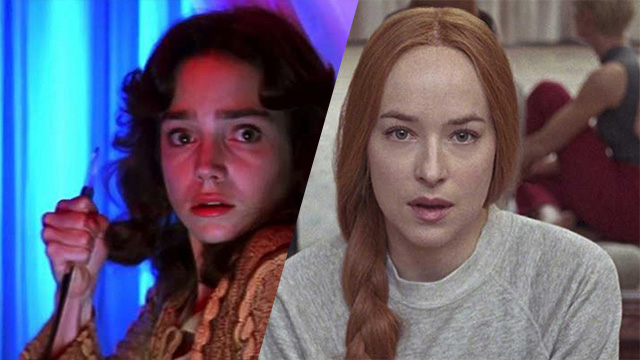
KYLIE HEMMERT: Suspiria (1977) & Suspiria (2018)
Click here to watch Suspiria (1977)!
Click here to purchase Suspiria (2018)!
I have been meaning to check out the original Suspiria and its 2018 remake for a long time now, and after watching both I can admit I was missing out on a couple of really fascinating horror tales. Starting with the 1977 film from Dario Argento, the mood from the very beginning is foreboding enough to the point where even the environment feels unwelcome, between the storm, the unhelpful cab driver, to the poor girl named Pat Hingle that Suzy witnesses fleeing from the ballet academy. The atmospheric tension is consistent throughout the movie, leaving the audience and our main characters feeling properly unsure and uncomfortable as the narrative unfolds.
Suspiria’s vibrant color palette intentionally sticks out, giving a distinct touch to its visually stylistic flair that serves as one of the elements that gives the original an edge over the remake. The story is relatively fast-paced, eager to traverse the mystery of what exactly is happening at Tanz Dance Akademie. I will say, the movie is highly predictable, from witches being revealed as the main villains in the opening scene thanks to the movie’s perfect fever dream soundtrack and the main theme’s use of the aggressive lyric “WITCH”, to picking out who will meet a gruesome end before the credits roll. However, I appreciate that for its time the highly original feature was likely far less predictable as it is structured to be a grand mystery revolving around the odd people who run the school and why bodies are gruesomely dropping left and right.
My favorite moment from the movie takes place at the very end when terrifying coven leader Helena Markos uses the reanimated, mutilated corpse of Suzy’s slain friend Sarah to try to kill our leading lady. Suspiria is full of effective, gory, and disturbing sequences that feel appropriate for the specific tone established immediately in the movie, but this scene really stuck out and is followed-up by a satisfying conclusion when Suzy is able to prevail over evil and escapes the dying coven as she flees the burning dance academy and maniacally laughs in the rain — which serves as a great circling back moment to when Pat ran away from the school on a different rainy night in terror only to later meet a deadly fate at the beginning of the movie. Unlike Pat, Suzy survives and ultimately brings an end to the nightmare.
Described as a “nightmarish fairy tale” by some, the movie was honestly not that scary to me. But what I greatly enjoyed about the original Suspiria was its effort to create a never-before-seen type of horror mystery that attempts to assault the senses and it kept me engaged throughout as I was eager to see how they intended to handle big reveal moments or its own brutality and Suzy’s role in all of it. A very memorable opening murder sequence tells the audience from the get-go exactly what type of nightmare they have just stepped into, forcing us to become invested with Suzy’s safety as we wonder what horrors await her. Dario Argento’s surreal film may not have truly frightened me, but its handling of the genre drew me in and never let go, making its case for why the movie has earned its spot among the best horror classics.
Diving into 2018’s Suspiria, I have to say, I was really intrigued by the wildly different paths the two versions of this story took. Releasing just over 40 years later, Luca Guadagnino and David Kajganich’s take on Dario Argento’s horror classic essentially heightens the surreal and the bizarre (and the disturbing) that maintains a fascinating and expectedly horrifying first few acts, but ultimately fails to deliver a satisfying final act as the original did.
Something that caught my attention initially was how the running time of the remake had tacked on an extra hour of screentime compared to the first Suspiria, which left me curious to see how the newer film was going to flesh out its story with that extra 60 minutes. While I do love that some of the time is spent incorporating more dancing and training considering the setting of the story — not to mention the horrifying realization that the act of dance is sometimes used to cast a spell that might include manifesting extreme and brutal torture — the last couple of acts of the film take a turn with a build-up that didn’t quite land for me the way the original’s succinct narrative did.
That’s not to say the movie, including its blood-soaked ritualistic ending, is not memorable or should be skipped over. I appreciated the authenticity of the setting, between the use of language and wanting to incorporate the environmental horrors and political violence in 1977 Berlin, and was mesmerized by the cast, especially in every single scene that incorporated dance. Tilda Swinton is always a commanding presence and Dakota Fanning did a great job playing opposite Swinton’s Madame Blanc (Swinton actually plays three roles in the movie) who becomes more and more obsessed with Fanning’s Susie.
One of the biggest things I struggled with in Guadagnino’s homage, though, was the lack of mystery. That may sound strange as there is certainly an ongoing puzzle in the plot, namely building up to the twisty final reveal and the unexpected truth about Fanning’s character, how Susie is not just some random American woman who enrolls at a prestigious dance academy in Germany run by a coven of witches. But instead of shrouding the coven in mystery, we are able to witness the inner workings of the coven’s dynamic which I both loved and hated as it gave interesting insight but also directly removed what made the coven more sinister in the first film.
At the end of the day, though, both versions of Suspiria are worth being experienced. They are original, fascinating, disturbing, and ultimately engaging horror movies that tantalize and terrify in different ways that will stick with you as they demand more of an open mind, which I can always appreciate.

GRANT HERMANNS: Dawn of the Dead (1978) & Day of the Dead (1985)
Click here to purchase Dawn of the Dead!
Click here to purchase Day of the Dead!
Where would the zombie genre be without the brilliant mind of George A. Romero? Admittedly, it wasn’t until late into my high school years that I finally sat down and watched his 1968 classic Night of the Living Dead and now, a decade later, I finally took the time to go back and watch the second and third installments in his long-running franchise, Dawn and Day of the Dead, and while the former certainly hold up to its classic status, the latter not quite as much.
The thriller centered on a small group of people taking shelter from a zombie apocalypse in a large shopping mall is chock-full of sharp satirical jabs at consumerism and race, much like its predecessor, though in expanding its scope and runtime, it also loses a step in its tension-building and pace and occasionally drags. Even if the characters prove thoroughly likable and enjoyable to watch, there’s many a moment after the halfway point in which the story seems to be going nowhere and struggling to find a path forward, as well as trying to find a proper balance between dark and slapstick humor and its more serious elements. Admittedly, the remake does correct some of these flaws while simultaneously suffering from others, but Romero nonetheless crafted an entertaining and still-effective zombie chiller.
The same can not be said, however, for his 1985 follow-up Day of the Dead, centered on a group of military officers and scientists living in an underground bunker in Florida as the world above is overrun by the undead. Described by Romero as more of “a tragedy about how a lack of human communication causes chaos and collapse even in this small little pie slice of society” than an outright zombie flick like the predecessors, the writer/director certainly taps into this theme throughout the story, although struggles to do so in any entertaining or compelling fashion. With a cast of wholly unlikable characters, a more deliberate pacing and overtly bleak tone, it’s hard to truly connect to the story and characters and while there’s still plenty of efficient gore, making for a mostly dull and only mildly entertaining affair.
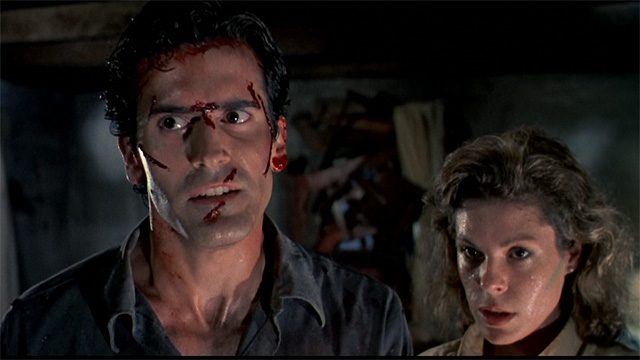
MAGGIE DELA PAZ: The Evil Dead (1981) & Evil Dead 2: Dead by Dawn (1987)
Click here to purchase Evil Dead!
Click here to purchase Evil Dead 2!
Before Sam Raimi went on to direct high-profile films such as Sony Pictures’ Tobey Maguire-led Spider-Man Trilogy and Marvel Studios’ upcoming Doctor Strange in the Multiverse of Madness, he first gained recognition for his 1981 independent horror film The Evil Dead and was then followed by its comedy horror sequel Evil Dead 2 in 1987. Both received acclaim for Raimi’s original story, direction, cinematography, and use of practical effects, which definitely cemented Raimi’s status as an influential horror filmmaker. The first two films have also amassed quite a big cult following, making them two of the best horror films to date.
Admittedly, the reason why I’ve never seen the original Evil Dead films before this year was because I’ve never really got the chance to see them when I was younger, where the only time I get to watch old films was through HBO reruns. My first introduction to Evil Dead was actually in 2013 in the form of a trailer for Fede Álvarez’s reboot film which I regretfully also didn’t watch because at that time, I wasn’t really a fan or open to seeing full-on gory horror films like the Saw films. Thankfully, I recently had the opportunity to finally see it after so many times of putting it off.
For people who still haven’t watched the Evil Dead films, the first one begins with five friends led by Bruce Campbell’s Ash Williams, who decided to go on a vacation at an isolated cabin in the woods where they’ve unintentionally woke up an evil supernatural force. From then on, madness ensues as one by one they became possessed by the entity, leaving only Ash to fight for his survival. Even though I’m still not into gory stuff, I have to admit that I’ve come to like this film a lot. I totally get how it was a very important piece in horror history as it became one of the pioneers to the rise of low-budget horror filmmaking. I actually appreciated it more after learning about the difficult behind-the-scenes process of making this film possible. From its creative shots, practical effects, and original storytelling, it’s no wonder that the franchise went on to build a legacy that inspired other filmmakers and movies since its debut. That’s why, when I’ve decided to re-watch it, I wasn’t terrified anymore but was just full of admiration for Raimi and his team’s passion and incredible talent for being able to create such a significant low-budget film.
Although the first one was great, Evil Dead 2 has become my favorite one because I’m more in favor of the comedy-horror genre. Even though it also featured the same great qualities as the original one, the 1987 sequel’s heightened humor and extra context to its backstory made it more appealing to me. I know that it’s quite a rare feat for any filmmakers to be able to replicate the success of their original film. But due to Raimi’s unique vision and talent, he was able to create another groundbreaking film that became one of the strong foundations of its long-running franchise. I also personally preferred Campbell’s leading performance in the second one because his character became more reliable and heroic. I think Evil Dead 2 was where Campbell’s status as a horror icon really solidified as he had become a symbol of tenacity in the face of pure evil.
Overall, I highly encourage everyone, who’s still having second thoughts about checking out these films, to stop missing out on Raimi’s early masterpieces because I guarantee that you won’t be disappointed. Watching the first two Evil Dead films honestly feels like a lesson in filmmaking. That’s why I think it’s really important for every movie enthusiast or budding filmmaker to check them out because you’ll be impressed by the heavy influence it had on the horror genre.
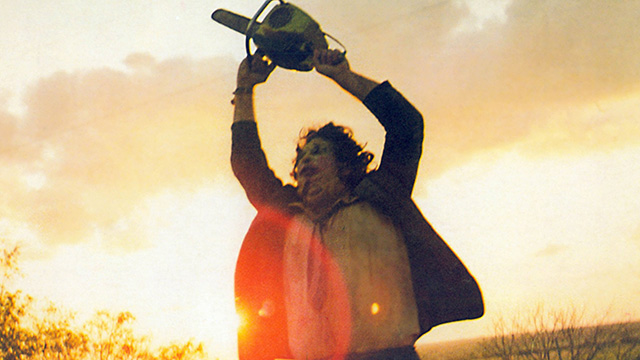
JEFF AMES: The Texas Chain Saw Massacre (1974)
Click here to purchase The Texas Chain Saw Massacre!
When asked to watch Tobe Hooper’s 1974 “classic” The Texas Chain Saw Massacre, my reaction was less than enthusiastic as I’ve never been enamored by Leatherface or his chainsaw-wielding antics. Now that I’ve seen the film… I still don’t get it.
The Texas Chain Saw Massacre is obviously not meant to be an enjoyable experience. What begins as a peculiar road trip flick — shot in a manner not unlike an adult film replete with young, scantily clad women, silly dialogue, and terrible acting — quickly turns into an extended series of chase sequences and grisly murders all of which culminate in one of the most headache-inducing finales I’ve ever experienced. Indeed, Texas Chain Saw feels more like a lucid fever dream than anything resembling a motion picture. The characters don’t much matter and are disposed of rather quickly; and the ending in which a bound and gagged Marilyn Burns endures an endless barrage of over-the-top mockery by the Sawyer family is simply too wacky to generate anything resembling pure terror.
Even so, the film successfully provokes a feeling of unease thanks to its solid production design, dizzying editing, and reliance on raw filmmaking that is as far removed from the hyper-stylized nature of the countless sequels and remakes that followed as Leatherface is to Ghandi.
Speaking of which, I was surprised at this depiction of Leatherface, who barely resembles the monstrous pop-culture icon he has since become. Here, he is a pathetic creature who cowers before his tyrannical father and lumbers about like Frankenstein on acid. That spinning dance at the climax felt more wretched than threatening; and his efforts to scare Marilyn’s character during the dinner sequence brought to mind that scene in Ron Howard’s The Grinch where Jim Carrey attempts to frighten a young girl by repeatedly jumping at her. I laughed in both instances.
Ultimately, Texas Chain Saw simply has nothing going for it aside from a willingness to ascend to levels of deranged violence typically reserved for snuff films. That’s it. That’s the point. It’s shock and awe. There are no lessons to be gleaned or characters to root for. Bad things happen and then the film ends. I suppose I understand why the film was successful — it’s quite shocking, even for a film made nearly 50 years ago. Though, I still don’t understand the need for such violent displays of human depravity. I’d rather watch Poltergeist.
